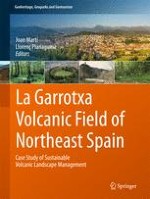This informative book takes readers on an enjoyable journey through the La Garrotxa volcanoes. In addition to a general description of the main geological and volcano logical values of the region, it also provides a detailed account of the history of the region, its biological diversity, and its cultural heritage including architecture, folklore and gastronomy. La Garrotxa Volcanic Zone was declared a Natural Park in 1982 to protect the numerous sites of special interest that are found in this region. The Natural Park has been pioneering in many initiatives aimed at preserving the landscape and natural values and promoting awareness of the area within the community. An important part of this book is dedicated to the insights into the educational programs and outreach developed to disseminate the main values of this region. It shows how sustainable tourism has been implemented and the management plan that has been designed to preserve such important natural and cultural values. Including local experts’ views on the topics covered, this book will appeal to a general audience interested not only in visiting the area but also in gaining insights into an example of geoheritage and geoconservation that has successfully integrated of education, tourism, planning and environmental management.
